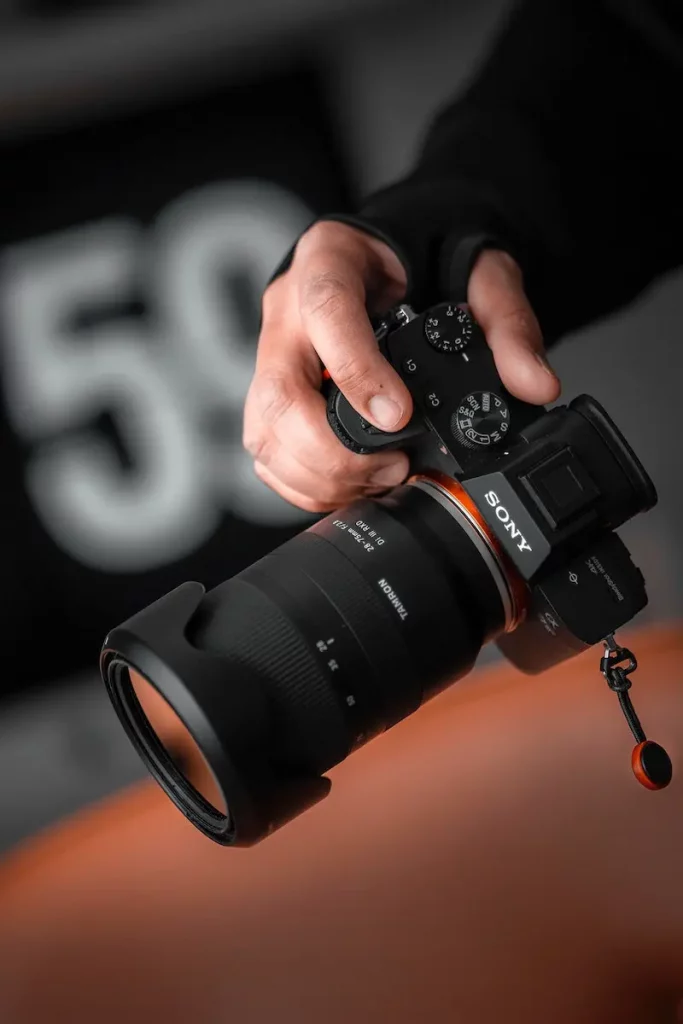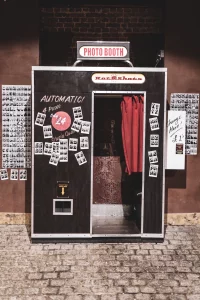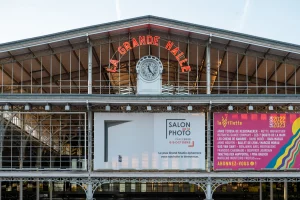When it comes to photography, the talent and technique of the photographer are often presented as the determining factors for a successful shot. In addition to these elements, which undoubtedly contribute to the quality of the photographs, we find the photography equipment, which is far from being accessory. Equally indispensable, it plays a leading role in the photographer’s work.
In portrait photography, in this case, the importance of the equipment is more prominent. From the camera to the various accessories, discover all the tools that contribute to the secret of good-quality portrait photography.
Table of contents
The essentials for taking portrait photos
With the expansion and democratization of smartphones, anyone can choose to become a photographer. However, to get started in portrait photography or to become a professional in this discipline, the first step is to equip yourself with a camera and a lens.

The camera
The camera is undoubtedly the main working instrument of the portrait photographer. Several ranges and models are offered by brands, including Nikon, Canon, Sony, and more. Specifically, there is a choice between:
- the compact, which is a small, automatic camera model, still used to create souvenir portrait photos;
- the bridge, an automatic and manual device that borrows from the characteristics of the compact camera and the reflex camera;
- the hybrid, which is a compact model with some of the functionality of reflex devices;
- reflex cameras, which are available in consumer and professional models with a large sensor.
The choice of one or the other type of camera depends on technical needs, the photographer’s level of experience, the quality/price ratio of the equipment, the budget available, etc. Whatever the type of camera chosen, it is important to opt for a professional model, like the Canon Eos Mark.
Lenses
If choosing a camera is worth spending time on, choosing a lens is no less important, because the lens is the main accessory of the camera. Usually sold as a kit with hybrid and reflex cameras, the latter can still be purchased separately, if you want to take portrait photos of a certain quality.
In this case, too, there is a choice of lenses that vary according to the focal length in millimeters (mm) and the aperture of the diaphragm. A distinction is made between:
- the 35 mm lens, used to take full body shots;
- the 50 mm f/1.8 lens, ideal for those starting out in portrait photography and convenient for photographing a group of people;
- the 85 mm f/1.4 lens, recommended for flattering frontal shots and for avoiding facial distortion;
- the 105 mm lens, a versatile lens that allows you to highlight details, textures and close-ups on the eyes, for example;
- the 135 mm lens, preferably used to photograph a subject from a distance, but not recommended for a full-length portrait;
- the 70-200 mm lens, an ideal telephoto lens to preserve all the realism of the face;
- etc.
These different optics can be classified into two categories, namely zoom lenses and fixed lenses. In portrait photography, fixed focal length models are preferred, as they have a large diaphragm aperture and therefore guarantee better image quality.
Accessories of the portrait photographer
Aside from a camera and a lens, the portrait photographer’s equipment consists of several accessories.
The light box
In portrait photography, light is the photographer’s first ally. Indeed, it is essential to facilitate the taking of pictures and has an undeniable impact on the quality of the images.
When it comes to light, you can settle for natural light. However, it is not always easy to bring out all the features of a face by relying on sunlight or moonlight alone. Light boxes are therefore ideal accessories, as they allow you to change the lighting as you wish and to avoid shadows or annoying lights.
Flash
Another light manipulation accessory, the studio flash or flashlight is most often used to take portrait shoots in the photo studio. It allows you to modulate the shadows and the intensity of the light and can even be used to color the scenes.
A light reflector
As you might expect, the reflector is an important piece of equipment for manipulating light intensity in portrait photography. Used as a light source, it serves as an accompaniment to the flash or the projector and allows you to reflect the natural light for improved enhancement of the features of the face to be photographed. Its role is also to attenuate intense sunlight. There are several versions, namely:
- the white reflector, used to obtain soft light;
- the silver reflector, which allows you to obtain a cold and hard light;
- the gold reflector, which provides warm light.
The memory card
As a storage component, the memory card has its place in the accessories that form the portrait photographer’s hardware. Its role is to preserve the photos taken on various occasions.
In general, there are two types, namely the Compact Flash memory card and the SD card. When choosing a model, you should consider the storage capacity in GB of the memory card, the speed of copying stored photos from the camera to the computer, the speed of recording images during the shooting, etc.
The tripod
Typically used for landscape photography or night photography, the tripod is no less useful in portrait photography. It can also used for self-portraits. More generally, its role is to keep the camera static and allow the photographer to take shots from all possible angles.
Backgrounds and background support kits
In portrait photography, the background used has an undeniable influence on the quality of the images. While the sky and natural scenery are used as a background in outdoor portrait photography, this is not the case in a home or professional studio, where you have to imagine and create the background yourself. For this purpose, fabrics, plants and other elements are used.
However, the task can be simplified by opting for a background support kit. Several types of photo backgrounds, such as foldable or fabric models, can, in this case, be used according to the shooting sessions.

The photo bag
Photo bags can be used to contain the photographer’s work equipment and to protect it against impacts and bad weather. As such, they are a very useful accessory. A variety of options are available to portrait photographers based on their level of experience.
So, you can opt for the shoulder bag, which is an inexpensive, discreet and ideal model for beginners. As for experienced portrait photographers, they can turn to the photo backpack. The latter is modular, spacious, with several pockets, but above all, it is waterproof and comfortable for transport.
When it comes to portrait photography experts who are often called upon to travel, they should opt to use a suitcase, which is ideal for carrying their studio and all of their equipment everywhere with them.
- Everything you need to know to get started in photography
- How do I choose the right lens for a camera?
- How do I choose an external flash?
- What equipment should I use to take landscape photos?
- Which computer should I choose for photo editing?
- How do I create a photo studio?
- Lighting solutions in photography
- Equipment for creating sports photos
- Equipment for wildlife photography
- How can I develop my own photos?
- How do I choose a camera tripod?










